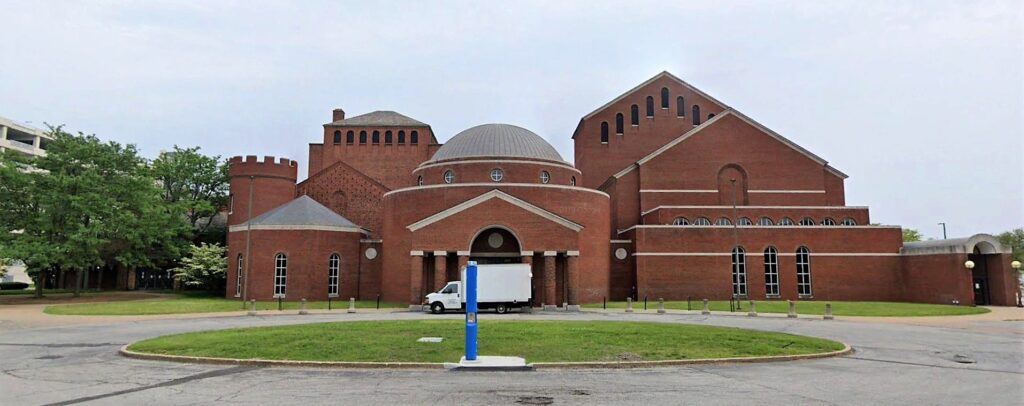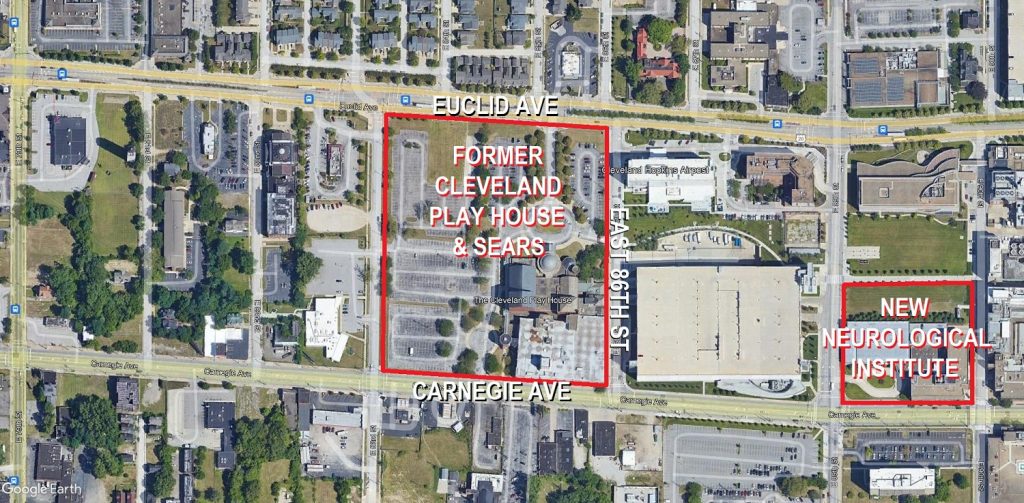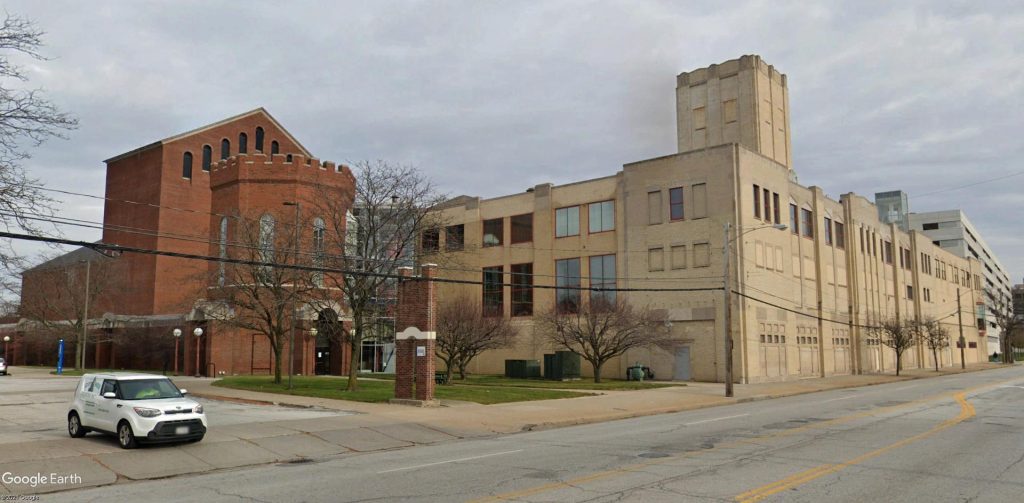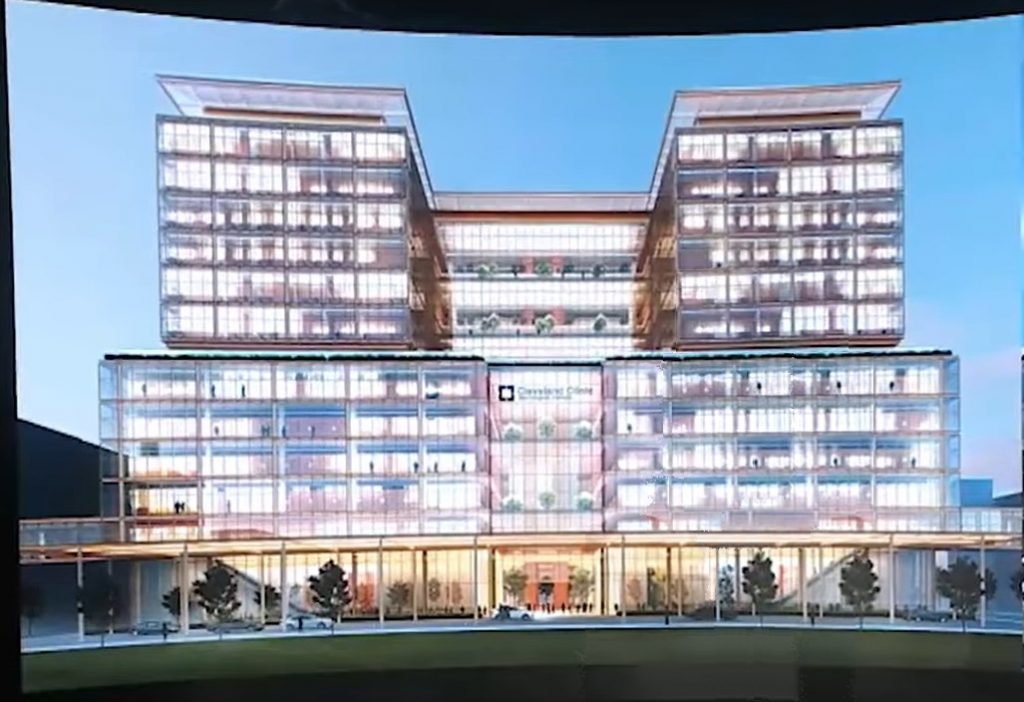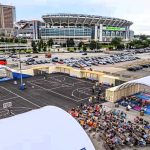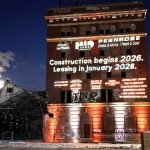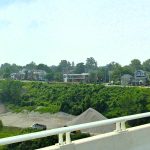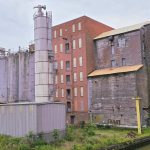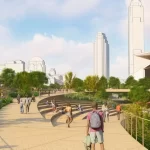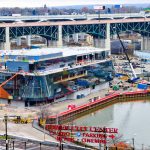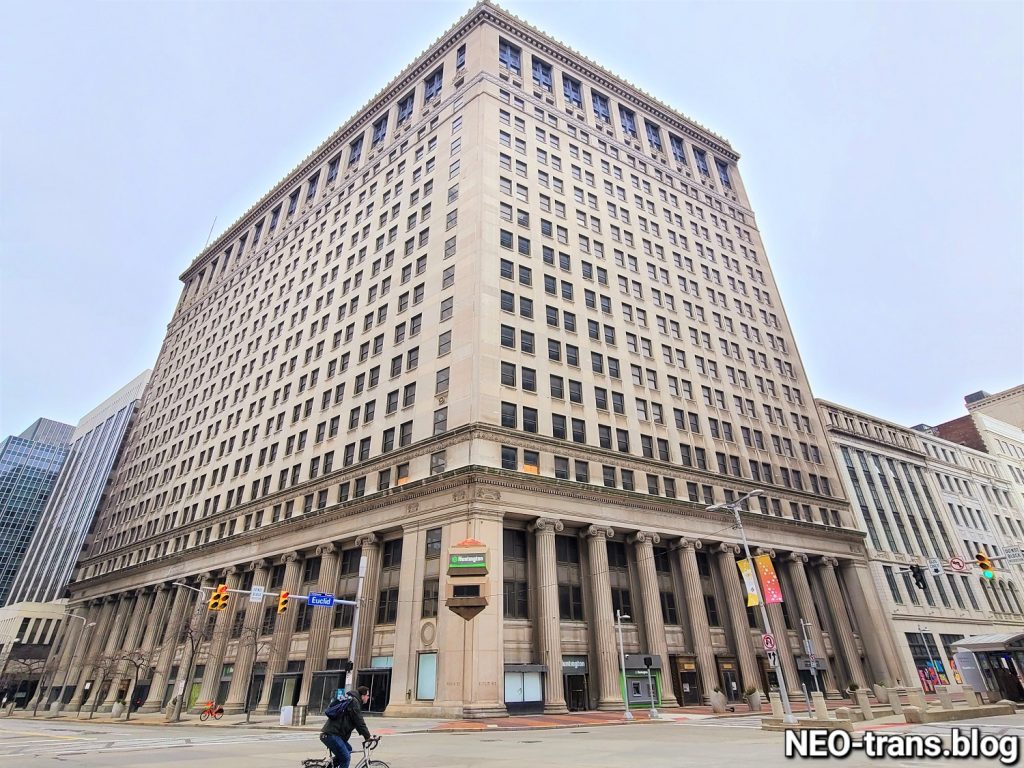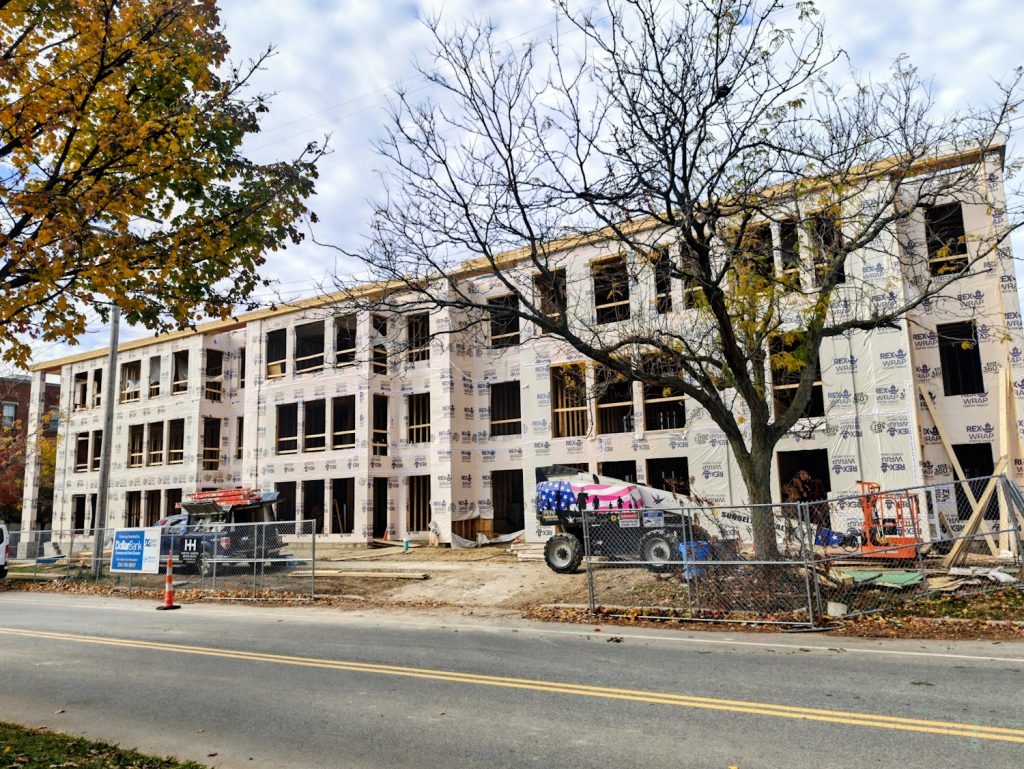The vacant, former home of the Cleveland Play House in the Fairfax neighborhood is the subject of a community meeting scheduled to be held next month. Owner Cleveland Clinic plans to demolish the complex for one or more possible uses that will be discussed at the meeting (Google). CLICK IMAGES TO ENLARGE THEM
Community meeting may decide future uses
The Cleveland Clinic Foundation and Fairfax Renaissance Development Corp. will host a public meeting to gather community input on what to do with the vacant former home of the Cleveland Play House (CPH), 8500 Euclid Ave. The meeting is part of a larger effort by the community development corporation and the Clinic to refine a multi-billion-dollar construction masterplan for the health system’s Main Campus.
The community meeting will be held at 5:30 p.m. May 16 at the Cleveland Clinic’s Langston Hughes Community Health & Education Center, 2390 E. 79th St., located in Cleveland’s Fairfax neighborhood. Last November, NEOtrans broke the story that the Cleveland Clinic intends to demolish the ex-CPH complex.
Ward 6 Councilman and City Council President Blaine Griffin informed NEOtrans that this meeting will include a discussion on the future of the 11.3-acre, ex-CPH property owned by the Cleveland Clinic Foundation since 2009. CPH abandoned the nearly 300,000-square-foot complex and moved to Playhouse Square downtown two years later. The Clinic has struggled to find a use for it ever since.
According to Clinic sources, they still don’t know what to do with the site, at least in the long term — which is what the community meeting will help determine. In the short term, the Clinic would like to use it as a construction staging area for its new, 1.1-million-square-foot Neurological Institute.
Planned to rise on the site of the Clinic’s Surgery Center, 2083 E. 89th St. at Carnegie Avenue, the new Neuro building promises to be the Clinic’s largest building ever built and bigger — at least as measured in square feet — than the new Sherwin-Williams headquarters downtown. Sources said the Neuro building will likely not exceed 15 stories. A conceptual rendering recently shared by the Clinic confirms that.
After construction of that behemoth, sources said the old CPH site, given its size, could accommodate more than one use for the Clinic, including a new, larger boiler plant, police department and other support services.
Sources specified the boiler plant as a potential use as it would replace a facility built nearly 20 years ago on East 90th Street just south of Euclid Avenue. By the time the new boiler plant is built, the existing one will be 30 years old and too small to handle steam generation for heating, humidification, domestic-water heating and instrument sterilization.
Angela Smith, senior director of corporate communications at the Cleveland Clinic said she has not heard of any final decisions as to how the Clinic intends to use the ex-CPH site.
Furthermore, the Clinic intends to raze multiple structures on both sides of Euclid near East 90th. Those include the Clinic’s original 1921 building, the T Building, 9204 Euclid, the neighboring Callahan Center for Radiation Oncology and Robotics, the Mellen Center/U Building, 1950 E. 89th St. and the attached, aging police department headquarters, 8811 Euclid.
In the next three years, the Clinic intends to invest $1.3 billion on new facilities. But more will likely be invested in the next decade. With billions of dollars being spent by the Clinic on new facilities, hospital and community officials are trying to figure out what should be built where and in what sequence.
“They (the Clinic) are proposing to tear down the old Play House,” Griffin said in a phone interview. “They’re coming to the engage community on a new masterplan. The Clinic will discuss what could be alternative uses for that site. We will get input from community.”
Griffin said he has been getting input from inside and outside Cleveland about whether to save the old CPH buildings — the only known local structures still standing that were designed by world-famous Cleveland architect Phillip Johnson. The architect was also known for his pro-fascist views before World War II for which he reportedly tried to make amends after the war.
But the ex-CPH has older structures within the complex. They include a 1928-built, urban Sears department store, the only one still standing in Cleveland. Also, portions of two original CPH theaters that date to 1927 were renovated and expanded with a third theater per Johnson’s plans in 1984. With those additions, CPH became the largest regional theater facility in the nation.
Griffin said that, while historic preservation is important, he places a higher priority on the current needs of his constituents. That includes residents of neighborhoods surrounding the Clinic’s 173-acre main campus who complain about employees parking on their streets due to a lack of parking.
The new Neurological Institute may accommodate 2,000-3,000 employees and many more visitors but reportedly will not include a new parking facility. Instead, one of the inputs in the site selection process for the new Neuro building was to take advantage of the existing 4,000-space East 89th Street Employee Garage. Similar factors went into placing the three new buildings for the Center of Infectious Diseases along Cedar Avenue next to existing parking decks.
“One of my questions about alternative uses for this (CPH) site is, ‘does this alleviate parking concerns’?” Griffin asked. “Neighborhood issues are the things I’m going to take into consideration and are more important to me than preservation. I’m looking for input from the ward and the Clinic to hear what alternative uses they suggest. They (Clinic officials) don’t believe it (the old CPH complex) has architectural relevance and the structures are decaying faster and faster. Is there a plan where the community will have benefits?”
END

